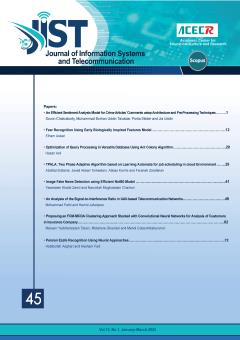Cardiac resynchronization therapy (CRT) improves cardiac function in patients with heart failure (HF), and the result of this treatment is decrease in death rate and improving quality of life for patients. This research is aimed at predicting CRT response for the progno
More
Cardiac resynchronization therapy (CRT) improves cardiac function in patients with heart failure (HF), and the result of this treatment is decrease in death rate and improving quality of life for patients. This research is aimed at predicting CRT response for the prognosis of patients with heart failure under CRT. According to international instructions, in the case of approval of QRS prolongation and decrease in ejection fraction (EF), the patient is recognized as a candidate of implanting recognition device. However, regarding many intervening and effective factors, decision making can be done based on more variables. Computer-based decision-making systems especially machine learning (ML) are considered as a promising method regarding their significant background in medical prediction. Collective intelligence approaches such as particles swarm optimization (PSO) algorithm are used for determining the priorities of medical decision-making variables. This investigation was done on 209 patients and the data was collected over 12 months. In HESHMAT CRT center, 17.7% of patients did not respond to treatment. Recognizing the dominant parameters through combining machine recognition and physician’s viewpoint, and introducing back-propagation of error neural network algorithm in order to decrease classification error are the most important achievements of this research. In this research, an analytical set of individual, clinical, and laboratory variables, echocardiography, and electrocardiography (ECG) are proposed with patients’ response to CRT. Prediction of the response after CRT becomes possible by the support of a set of tools, algorithms, and variables.
Manuscript profile


